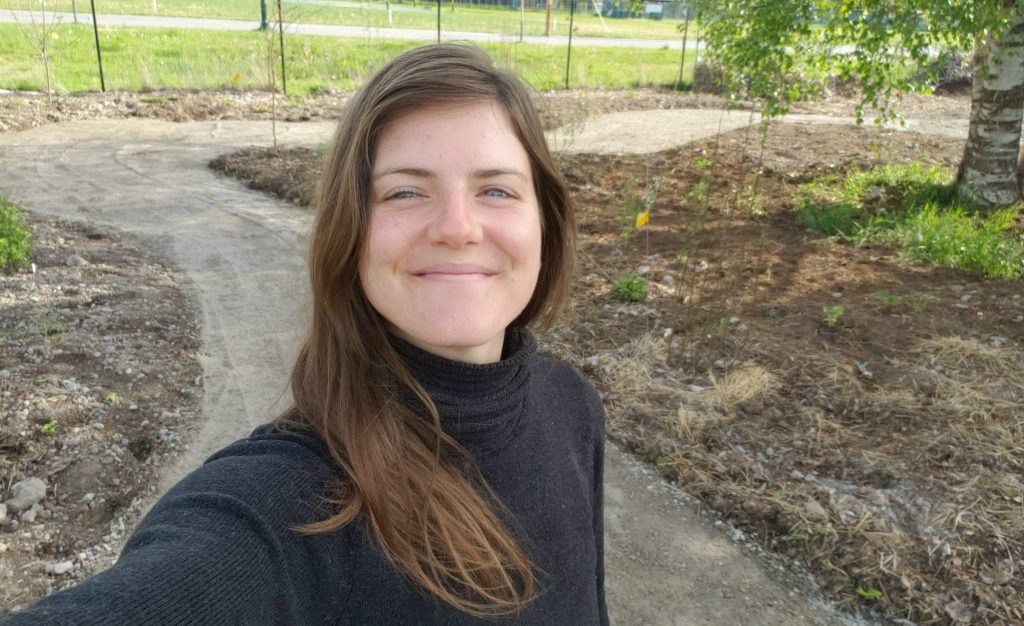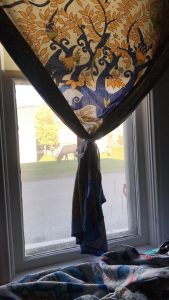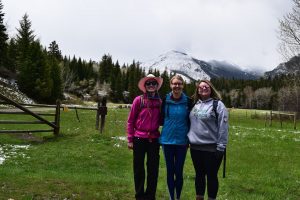By Sammie McGowan
Prior to COVID-19, the primary way I was serving my host site (the Center for Sustainability and Entrepreneurship at the Whitefish School District) was by writing and teaching the K-6 curriculum. As a new teacher, I was surprised by how rewarding I found it to be. And although I wouldn’t have the honor of teaching my kids the following year or the year after that, I felt comforted that I had contributed to their education, especially in regards to sustainability, in some form.
The interesting thing about teaching in my position, where I’d only see each student anywhere from 2 to 5 days throughout the entire year, is it’s hard to gauge their level of learning, and even more so, their level of retention. I found myself invigorated and excited after my classes, but I wondered if my students felt the same. Would my 4th graders go back to their classrooms and implement the energy saving techniques we had just learned in class? Would my 5th graders go home and tell their parents why it’s better to buy their vegetables locally and in-season, or even grow their own and insist their family start implementing those practices? Would my 6th graders go home and tell their parents, excitedly, how they had learned how to cut vegetables and make dressings, and ask to be a part of dinner preparation?
It’s hard to know. I tell myself I did the best I could with the time I was given, and that’s all I can really do, right?
But with the onset of COVID-19 restrictions, I suddenly didn’t have any students at all. And because the abrupt switch to online learning was overwhelming for the students, the teachers, and the parents, my auxiliary class was not deemed a necessity during the crisis.
So then I found myself in an even stranger position: only halfway into my service as a Sustainability Educator, and suddenly without students, how would I make an impact on their education?
My teammate/co-worker/Energy Corps partner, Althea, and I floundered a bit at first. We tried to help by using the CSE’s greenhouse to grow food to donate to the community food bank. Unfortunately we were also struggling with aphids at the time, and most of the lettuce had to be fed to our worms or thrown into the compost bin. We had started trays and trays of tomatoes and peppers in preparation for an Earth Day plant start sell, but with that cancelled we decided to instead give the 600+ starts away to the Whitefish School District staff. This was incredibly uplifting for us, but only took a few days of our time. The question still stood: how can I make an impact on the students without them here and without being able to continue our scheduled classes virtually?
Everything started to turn for us in mid-April, about a month after the shelter-in-place order came. Currently the CSE is made up of a building that is half greenhouse, half classroom, with raised beds outside. The vision for the CSE, however, is to eventually plant a food forest, a native forest, and a native wetland area.
When Althea heard about a fruit tree sale going on just a short drive away from us, we got the approval from our supervisor to buy 50 bare root fruit trees. We spent the next week digging holes and planting them in what would eventually be our food forest.
Then, in May, the school district hired a full-time grounds manager for the CSE, Chris. He took our vision of the food forest and ran with it. It’s only been a few weeks since he started and we now not only have the fruit trees planted, we have an actual food forest. We dug and laid gravel on a pathway through what used to be just a large area of dirt. Around the pathway we planted native species from the Center for Native Plants as well as annual vegetables such as corn, pumpkin, basil, peas, and squash. Later this week we’ll be getting in a shipment of almost 200 fruit bushes that we’ll plant as well. I love standing in the middle of the large circle we carved out in the middle of the gravel path for classes to gather and look around at all the bare root trees and tiny plants we’ve just planted, imagining what it will all look like in a few years, 10 years, 20 years.
Although my service looks entirely different than it was supposed to, and although I’m sad not to have the opportunity to teach students, I’m so proud of what we’ve accomplished in spite of it all. Furthermore, I love that I was not only able to contribute to my students’ education, however hard it is to measure, but I was also able to contribute something tangible and easily measured: a food forest where the learning opportunities will be endless. Now I will always be able to see the difference I made in my community during my year of service with the Energy Corps.








